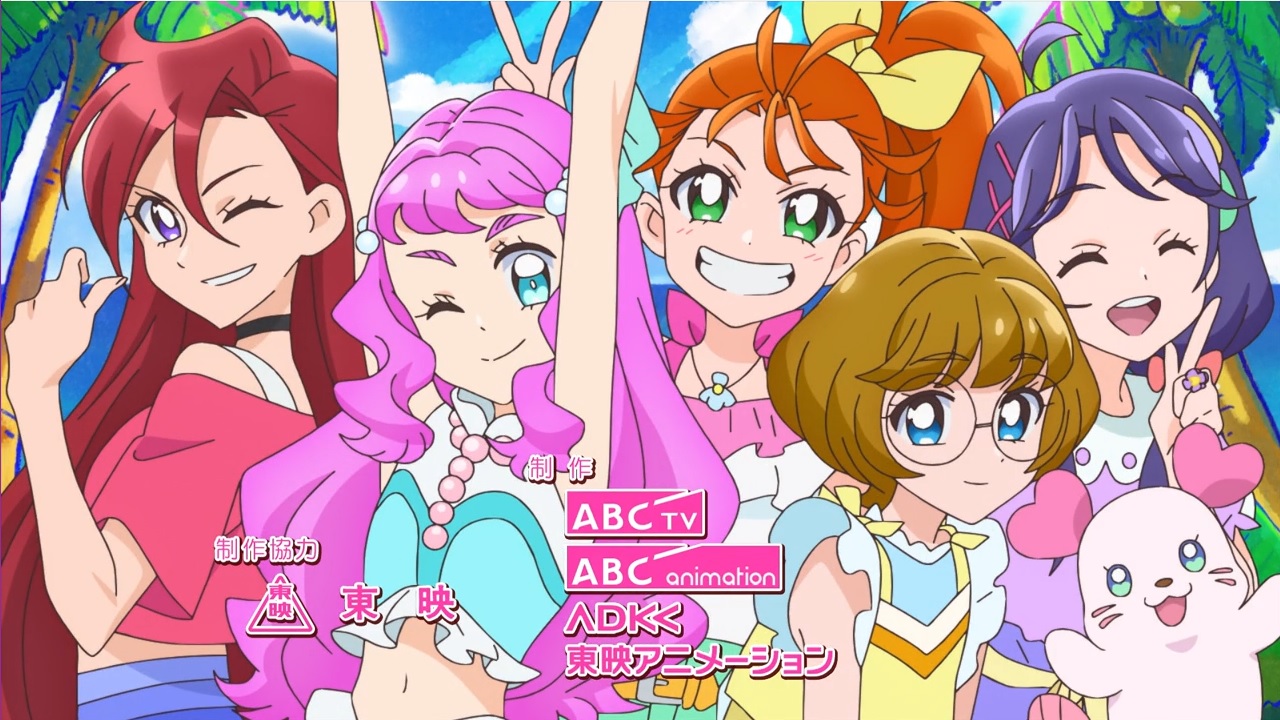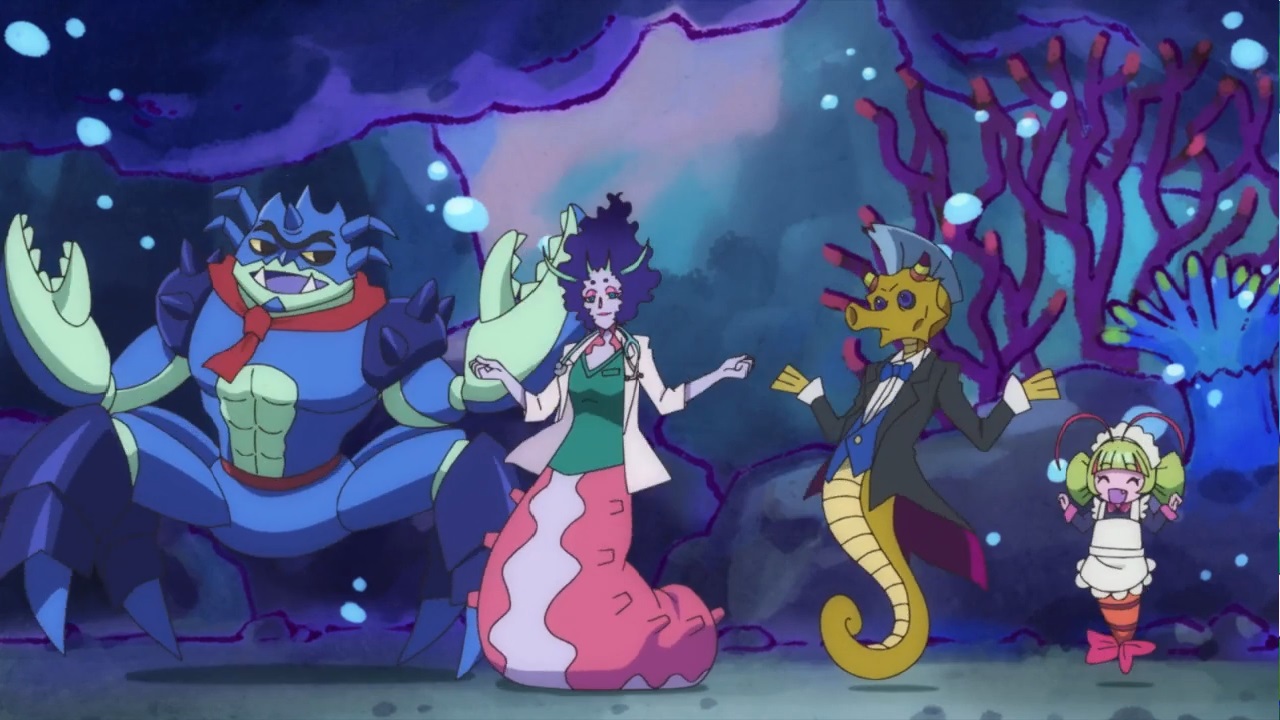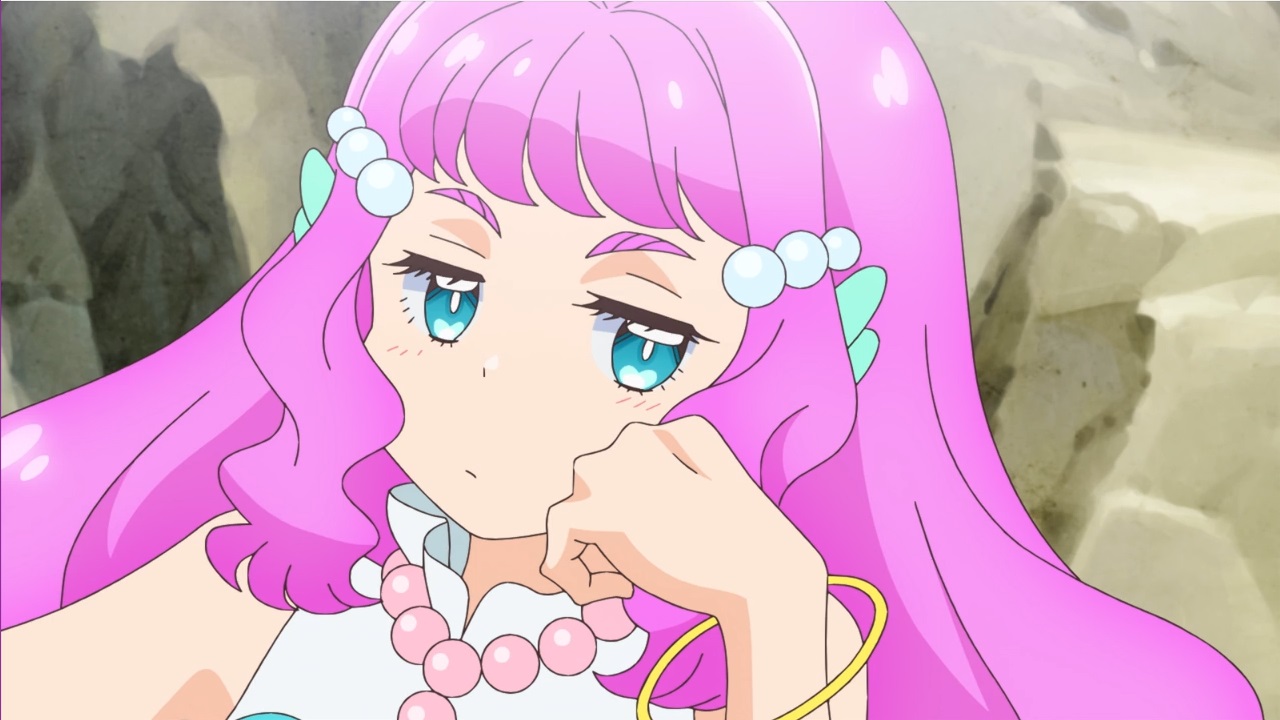Well, it took Henri until episode fortytwo, but they told you so in episode eight:
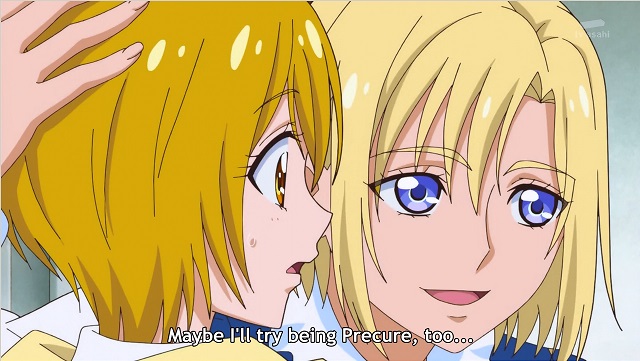
Hugtto Precure is the fifteenth installment in the Precure franchise, which as Andrea Ritsu explains has always been somewhat progressive and queer friendly, especially for a kids franchise. In recent years this has intensified: the Maho Girls Precure protagonists kissed, while there was a canon lesbian couple among the precure in last year’s Kirakira PreCure a la Mode . In this context it would make sense for Precure to finally introduce a boy Precure as well, something with which it has flirted in the past. Not out of some percieved need to always crowbar boys into something intended for girls, but because “boys can be princesses too”. And Henri is the perfect “boy” to do so. After all, they are:
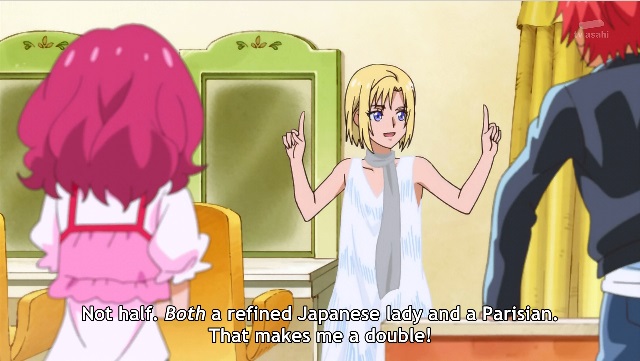
From their very first appearance it’s clear Henri doesn’t think of themselves as a boy, but as somebody for whom gender is irrelevant, wanting to be both and lucky enough with how they look that they could pull this off. Henri is self assured, confident and completely open in how they perform their gender. Henri starts off as a bit of an antagonist of the Precure girls, being friendly ice figure skating rivals with one of them and thinking the others are holding Homare back. Once that’s resolved though Henri becomes somewhat of a friendly face, helping Emiru standing up to her far too serious brother Masato, who’s obsessed with propriety. Said brother ends up becoming his somewhat over protective boyfriend not to long after by the way:

That’s from episode 33 when Henri blows a kiss to their adoring audience and everybody, men and women both, get hearts in their eyes, except for Masato, whose actual heart lights up. It’s a nice touch. In general I like the way the relationship between those two is shown: it’s never spelled out but it’s clear these are more than just friends with Masato always there to help Henri whenever the latter is getting depressed. And Henri does have problems: a potential injury threatens to derail his skating career, while the simple act of growing up, of getting taller, having their voice changed threatens their ability to have the gender they want.
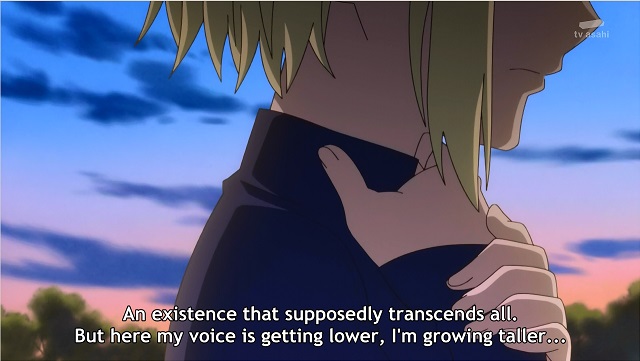
Henri isn’t in a lot of Hugtto Precure episodes, but the ones they’re in are some of the best of the series, laying the foundation for their eventual transformation into a true Precure. His story fits the theme of the series, with Henri’s worries for a future in which they may have to leave behind skating. Not to mention the fear that puberty will put an end to their ability to be “both a refined Japanese lady and a Parisian” as their body grows more masculine. The villains of the series too are obsessed with the future, wanting to stop time because only that way will people be unable to feel any more pain. They try to seduce Henri with this shared fear of the future and almost succeed, until:
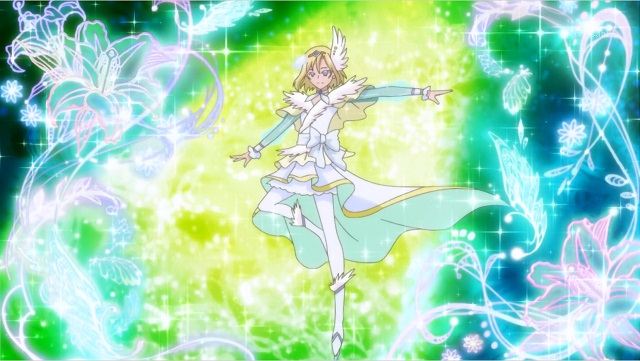
Becoming a Precure doesn’t solve Henri’s problems or fears, but it gives back hope, a way for Henri to fight through his momentary depression at losing his skating career and see new possibilites again. Having Henri, somebody who struggled not with who they wanted to be but with being able to keep being that person as the first ‘boy’ Precure fits with the whole ethos of the franchise. Of discovering yourself, of finding new ways to be yourself if the old way no longer suffices. Had they just plunked in some random guy this wouldn’t have worked, but with Henri you have somebody who is queer enough to be a Precure, who can serve as a bit of a role model for all boys to know that they too can be princesses, without having to fear Precure will be remade to appeal more to boys in general.
This is the eight post in this year’s twelve days of anime challenge. Tomorrow: I watched way too many pretty boy series this year.
